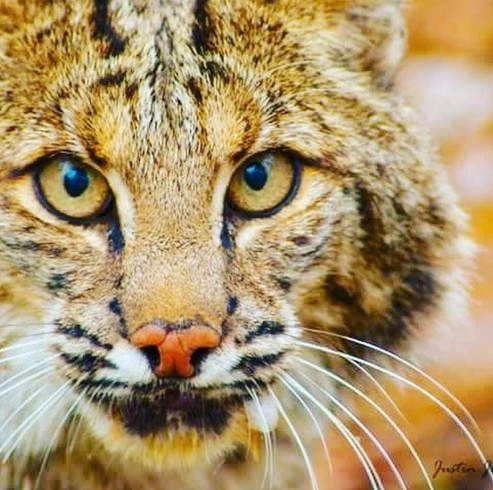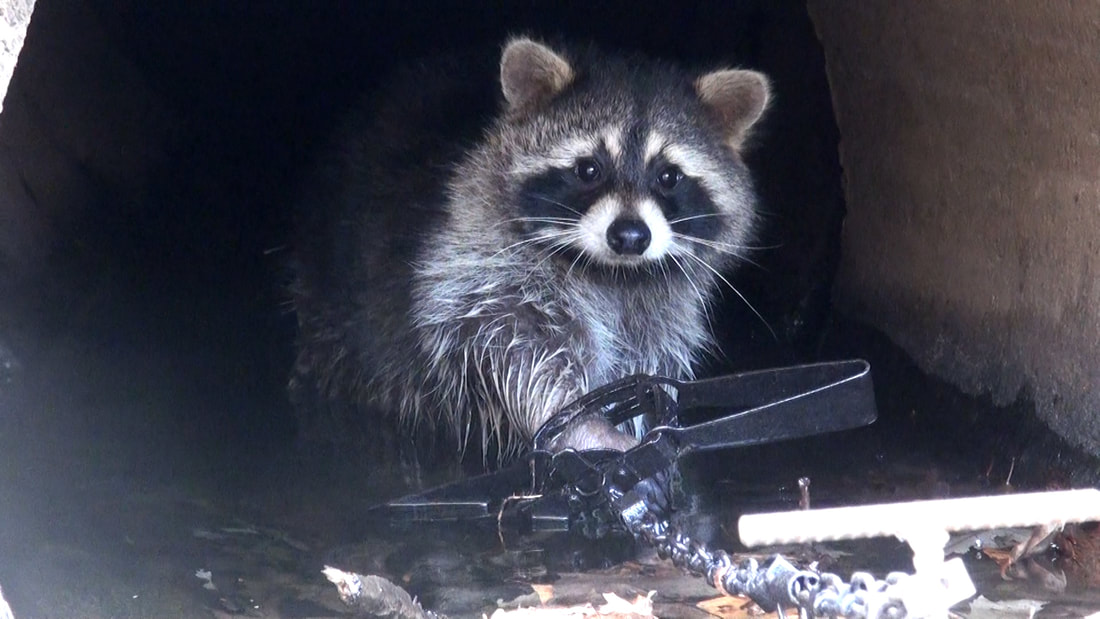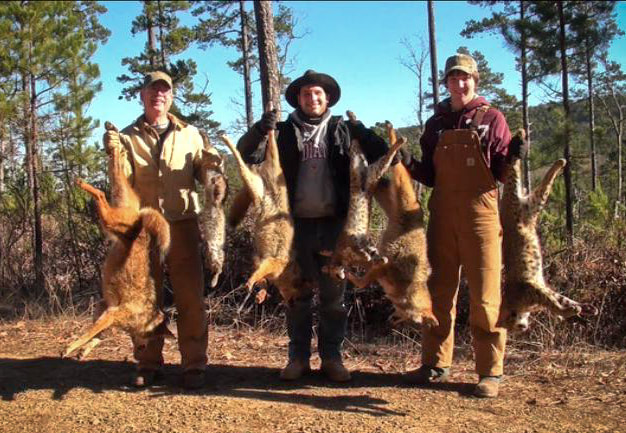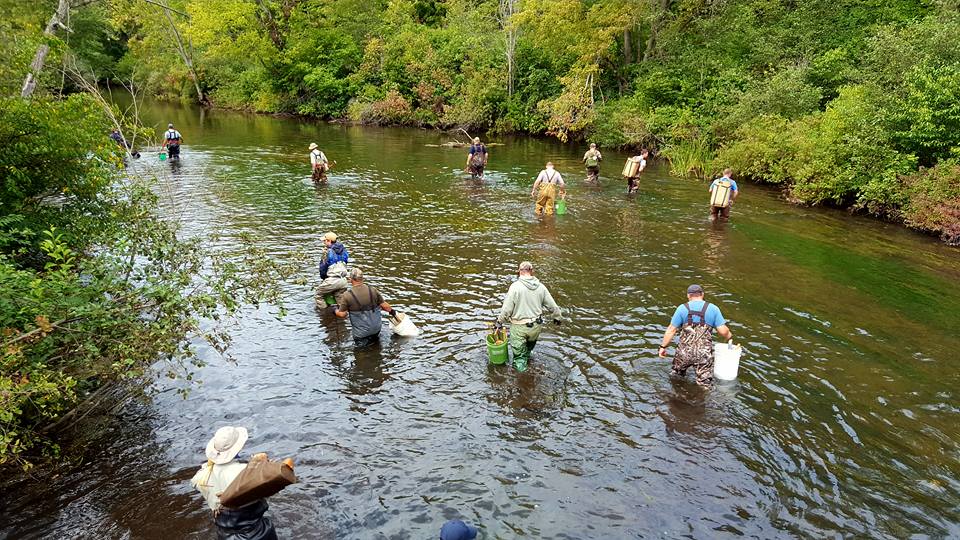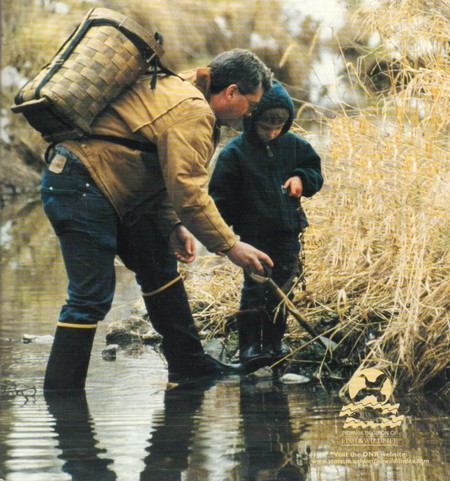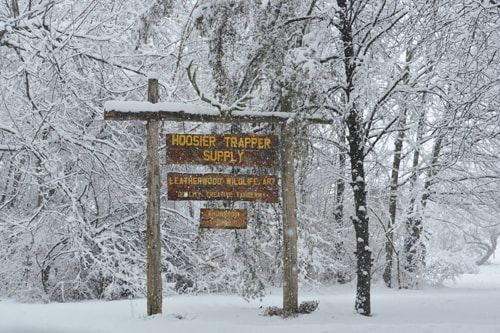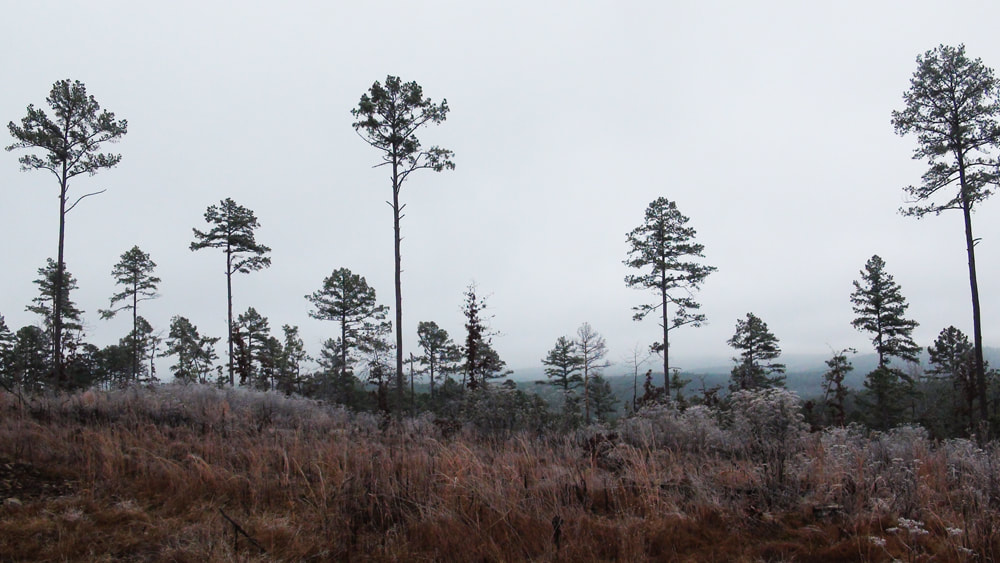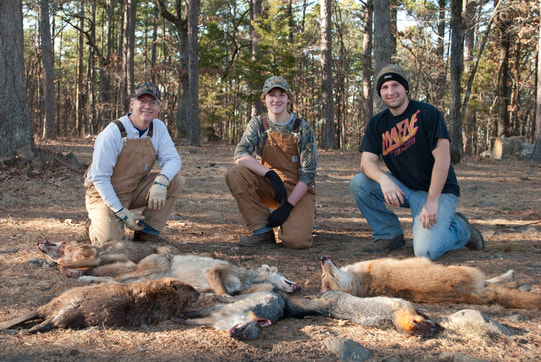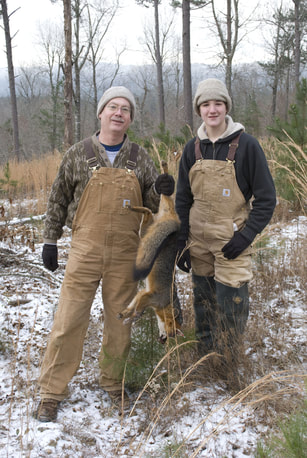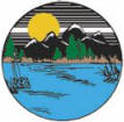|
It all started late last summer (2017) and in reality all of this began several years ago. I am referring to a potential bobcat season here in Indiana. For those of you from out of state, please read further. The "big picture" of this applies to all of us who care about conservation, wildlife management, trapping and hunting rights. As bobcat sightings increased, incidental catches increased, road-kills increased and trail cam pictures increased- the common question was "when are we going to have a bobcat season?" Here at Hoosier Trapper Supply it was pretty rare for a day to go by without hearing about someone's encounter with a bobcat. I have to say, I was pretty excited. In my younger years I never dreamed that we would even have a discussion about a bobcat season in my home state. For some related history, Indiana worked through and received an otter season which started in 2015. It is a strictly regulated season, applies only to certain counties, and has a quota. Quite frankly, the process for obtaining the otter season came off without much of a hitch. There was some public opposition however, it was fairly insignificant. The process in Indiana, initially the proposed season is preliminary adopted by the Natural Resource Commission. From that point the proposal is opened up for public comment. The public can comment both on-line and at public comment hearings. Last October (2017) I attended the Natural Resource Commission meeting where the proposal was up for a vote to either stop or move forward the idea of a season. The bobcat season was in a package of a number of proposed rule changes. The bobcat season along with a rule to require nuisance trappers to euthanize raccoons, opossums and coyotes (instead of releasing them) were the two changes that were significant. Bottom line, the Natural Resource Commission voted to preliminary adopt the rule package. This was despite a very lopsided group of attendees. Three of us spoke in favor of the season and 16 spoke against. To me, the opposition to this was the first wake up call. I overheard one individual opposed to the season say "We are just getting started". Over the next 6 months on-line comments were accepted and 2 public hearings were held. Trappers were encouraged to make a comment on-line and to attend hearings. The first public hearing was in Southern Indiana in a county that would be included in the season. The meeting was well attended. Those in favor of the season were 60% plus and those opposed were 35% plus or minus. At this point I felt pretty good about our position and support. The second and last public hearing was held in the Northern Indiana. All I can say is that a geographical change made a huge difference. The area was much closer to Indianapolis and several mostly urban counties. The proposed counties for the season were all in the southern half of the state. The hearing was in the northern half of the state. To make a long story short; 70 people spoke in opposition to the season and only 10 of us spoke in favor. I must admit it was a miserable 3 hours to sit through. The opposition brought up everything from how many ticks opossums eat to the white rhino going extinct. We were just out-matched. Certainly, the opposition which included the Humane Society of the United States and the Sierra Club was much more organized than we were and did a better job in rallying the troops. Even though, what they said was half truths at best and in most cases just plan "made up" rhetoric. The Natural Resource Commission met in May (2018) for a final vote on the proposed rule changes. The room slowly filled up and by the time the meeting started there wasn't a chair available. It was evident that those of us in favor of a season were in the minority. To say it wasn't even close would be an understatement! Here again, the opposition did a much better job. The meeting agenda was adjusted so that the bobcat season, mandatory euthanasia proposals, and the other DNR rule changes would be addressed first. To sum this up, the DNR pulled the bobcat season and the mandatory euthanasia proposals from the rule change package. The Natural Resource Commission voted in favor of the rest of the package. No Bobcat Season on the immediate horizon! Some may say (and I agree) biology and the recommendation of a biologist were ignored in favor of an unknowing, emotionally charged group that would oppose any consumptive use of wildlife. Some have speculated that the opposition came from out of state. Although, some of the on-line opposition did come from out of state, it was noted appropriately and the vast majority of the opposition came from within Indiana. It would be naïve to say politics aren't involved as well. I also would say, what is the point of public input if it was just ignored? Online comments were very lopsided with a ratio of 10 - 1 in favor of those opposed to the season. Online response was much greater than the number of attendees at the 2 public hearings. We can speculate with conspiracy theories, make excuses, pass-blame or we can accept responsibility and admit that we were just outnumbered and out maneuvered. Some may say "I'm not in an area that will be a part of the season, I just don't care and I don't need to be involved" My response to that is this is a gain for all of us whether you personally can take advantage of the season or not. To have a bobcat season is an offensive gain. Trappers are a minority and we have the largest target on our backs in respect to all of the animal rights groups. Many states continually fight the efforts of these groups. So we have to remember, even if it doesn't affect us directly we have to be pro-active. It's far better to make gains than to have a defensive position to protect what we have. To sum all of this up (from my perspective), the next time the bobcat season is proposed we as trappers cannot afford any level of apathy. We need to be organized, we need to ask other sportsmen's groups for help, and we need to follow through. Like I said this is a wake-up call!
11 Comments
I recently gave a demo at the NTA convention in Pecatonica Illinois.
Instead of starting the demo with a joke or something funny, I told a true story. Certainly, it was and is funnier now than when the events of the story actually happened. Years ago, I believe it was the winter of 1984, I was preparing for a trip to Pennsylvania to sell a load of raccoon skins that I had bought. At that time, I was a fur-buyer. Everything was bagged in burlap fur bags, loaded into the truck for the trip east. We left Indiana at 9:00 p.m. with snow swirling and dropping temperatures. The plan was to drive all night, arrive at our destination in the morning, sell the 'coons and drive home. My brother in law was driving the early morning shift and I was trying to get some needed sleep. As the sun was coming up (on a very cloudy day), the truck hit a patch of ice, slid into the side ditch and took a half turn- leaving the truck completely upside down. Talk about a rude awakening! Of course both of us hit our heads on the ceiling which was now the floor. Fortunately neither one of us was hurt, other than a few bruises and my brother in laws pride. We rolled the windows down and crawled out to assess the situation. The windshield was crushed in on the passenger side the camper shell door had come open and 'coon skins were falling out. The extent of the damage was a little hard to determine with wheels in the air and the cab and camper shell in the ditch. It didn't take long for the state police to arrive. My brother in law had to endure a science lesson from the trooper (I think he was trying to impress the rookie that was with him) concerning the freezing point of water and how it affected the roads. Fortunately science class was cut short by the arrival of the wrecker. The wrecker flipped the truck over to the proper position. Remarkably, the damage was not that bad. The truck started up on the first try, we recovered the raccoon skins and we were on our way. We stopped at the next exit, topped off the fluids that had leaked out and headed to our destination. While the 'coon were graded, a local mechanic repaired the side mirror and made a few minor repairs. With the 'coons sold and check in hand, we headed home. The truck was moderately damaged and fairly functional. Only one door opened and the passenger side windshield was crushed - outside of that no real inconveniences. I will admit, I have one lasting condition/side effect from this experience- whatever you want to call it. I have a difficult time sleeping while someone else is driving. For those of you that watch Hoosier Trapper Outdoors - that's pretty much why I am always driving! Until next time…. Charlie Masheck P.S. This blog is dedicated to Mark Steck - story teller extraordinaire! I have the opportunity to talk to trappers pretty much every working day of the year and have done so for 40 years. This has given me quite a perspective on methods, approaches, and the perspective of others.
I have talked with some of the best trappers in the country and certainly lots of beginners. This blog is about jumping to conclusions. I will start out by saying this may seem a little negative because this is based on the mistakes of others. However, I will defend myself in saying that we all learn from our mistakes and the mistakes of others. Certainly the success and methods used by successful trappers are pretty well documented. So this is working off of the premise of learning from our mistakes. In a scientific study, conclusions are based on a number of determining factors, variables and in most cases keeping everything exactly the same to see if the results are the same each time. Many times I have seen trappers have one or two occurrences and assume that what they are doing isn't working. At times this is at the beginner level. However, I have seen this occur with veteran trappers that are trying new methods (possibly out of their comfort zone). Recently, a new trapper was in the shop telling me of his lack of success. He was trying to trap coyotes. He told me that he was using a dirt hole set to no avail. He proceeded to tell me that he had found a video on Youtube that showed a trapper using a double dirt hole set. Of course he tried the double dirt hole, caught a coyote and his conclusion was that the double dirt hole set was far superior as compared to a standard dirt hole. This example is a little extreme and highlights the pitfalls of a new trapper. It is also a good example of jumping to conclusions. I have heard numerous similar scenarios over the years. For a trapper to come to a conclusion based on just a few occurrences would be pre-mature to say the least. As all of you know there are a number of factors and variables when trapping. Everything from weather, temperature, time of year, location, target species, etc. . To try something and then give up on it too early could end up being a huge mistake. Constant evaluation is very important. What you are doing in November may not work in January and vice versa. The evolution a trapper goes through in his career may seem subtle. However if you back tracked to the beginning or even middle years, the present day methods are probably reminiscent of the past with significant changes and adjustments. I might add that a veteran trapper has years of experience on his side. Many times what he is doing differently may not even be earth shattering to the observer. However, I can assure you they are there. It is the "intangible lifelong experiences" that are sometimes hard to completely process. In most cases it takes a base line of knowledge and experience to fully appreciate what a veteran trapper's expertise. I can assure you that most successful trappers have not jumped to conclusions prematurely! So, keep an open mind and don't give up on a method, new method, or idea too soon! Until next time Charlie Masheck I have always said, "You can ask 12 trappers a question and you would get 13 different answers".
A couple of weeks ago I spent my 4th year at the FTA Trapper's College as one of the instructors. The FTA College is in connection with Purdue University. It is certainly the greatest experience on the planet for any trapper. The instructors will tell you that they learn as well during the full week of actual trapping, speakers, demos and just being able to talk with experienced trappers. The wealth of knowledge is second to none. There are 15 instructors with a combined 700+ years of experience. Anyone interested in trapping, or wanting to become a better trapper, should definitely consider attending the FTA Trapper's College. One comment that I hear every year, particularly from the beginners, is their concern over conflicting information from the instructors. Generally speaking, it normally comes down to small refinements or details. One area of disagreement that sticks in my mind from this year's "College" is the placement of 220 Body Traps on land. One instructor said that the trigger should go on the top of the trap, where as a different instructor said the trigger should go on the bottom. Clearly, this is a small detail and in the scheme of things, I wouldn't lose any sleep over it. Just an example of differences in opinion… This year at the "College," each group (there are 5 groups) was given 4 trail cameras. The cameras were to be placed on different set locations to see if we could capture animals working the set and ultimately being caught. One interesting result from a camera was of a 220 Body Trap that had been placed on a trail. What the camera had captured was a raccoon literally climbing over the top of the 220 and continuing on his evening sojourn. So, let's back up a bit and work on basic areas of agreement. The 220 should be set on an active trail, the trap should be off of the ground 3 - 4 inches. The trap should be fenced in if the trail doesn't have adequate "sides" to it. Blocking on the top of the trap is advised, and an attractant can be used such as a trailing scent (but in most cases not necessary). So, clearly what the video off of the trail camera showed was that blocking above the trap would have kept the raccoon from crawling over the trap and resulted in a catch. The trigger placement probably didn't have much to do with the raccoon's decision to go over the trap. My point of all of this is that while methods may vary from trapper to trapper, what we do as trappers is all very similar. The refinements and details are where the differences may be. All of us develop and change our perspective and methods as we gain experience. Clearly there are no definitive answers, just methods based on years of experience. Until next time…. Charlie Masheck Long after the dust has settled from this past season, long after the fur check has been spent, long after the equipment has been cleaned and prepared for the following season, long after the successes and failures - we have made memories!
Whether you are a recreational trapper, a professional trapper, or a land-management trapper; you have made memories. In my view, far more valuable than a fur check. Our memory can even influence or affect future fur checks! I have trapped with my son Jake, since he was pretty much able to walk. To this day he still traps with me; the experiences we have shared and the memories we have made have built a strong relationship and a tradition that will be hard to change. Memories are very valuable in the learning curve as well. An accurate memory of experiences; both good and bad, can give us a new base-line for the methods we use. Recalling the past and not falling back into the same old way of doing things can and will make us a better trapper. As we become more experienced, the subtle changes we make can be the difference between good and great success! Some of the best memories of my life are when I was young and just learning to trap. Even to this day, when I make a catch, for a split second it is as exciting as it was the very first time! When you think about it, that's what keeps us coming back season after season. As this season winds down, I can assure you that many more memories have been made. Jake, Justin and I always have a great time together and we all look forward to next season to do it all over again. I can also say that the experiences I have had will affect how I will do things next season. Until next time … Charlie Masheck A common question (every year) when the snow flies is: "The coyotes are just walking by my set and not even giving it a sniff?" "What's up with that?"
Well first of all, they were walking by your set before the snow, you just weren't aware of it. As I have said over the years; "snow is the great humbler". We think we are doing pretty well, then the snow comes along and takes the wind out of our sails. These occurrences happen to every trapper; beginner, experienced and veteran. There are several things to think about or to consider. What was the coyote's perspective?, Did he just gorge himself on a road-kill deer?, Did he even smell the attractant?, Did he even care?, Was the wind blowing in the wrong direction?, And an even bigger question; Will he be interested the next time he passes by? All legitimate considerations and questions, of course the answer we come up with would be at best an educated guess and on the downside pretty much pure speculation. However, the most important question; What can we do? In a lot of cases I'm not sure you can do anything about it and in some cases you can. For starters, if you only have one set on the main path of travel, make a set on the other side to take advantage of the wind from either direction. Maybe change things up and use a urine post or flat set with urine and gland lure - however, this kind of goes back to another set they may walk by and not be interested in. I believe that we have had success with trailing scents for predators. It can be as simple as urine sprayed across the path of travel, salmon or fish oil used as a trailing scent, or a bottled trailing scent such as our Predator Gravy. If you think about it, when you come right down to it - we ultimately just don't know for sure what may have sparked the coyote's interest. On the positive side, if the coyotes are coming by, your location must be good. So, keep the traps in place, and it is very likely that the very same coyote will be interested the next time he comes through. You know, if it were easy and not a challenge- what would be the point? There is always something to learn, we just have to come to terms that we don't know it all! Good luck to everyone with the late season coyotes! Until next time….. Charlie Masheck Trapping success is affected by many variables; time of year, weather, level of experience, competition, etc. Some can be dealt with some cannot. One factor that occurs every season that we can't control is what I would call the "December lull". This primarily applies to coyote and coon.
The explanation for coon is pretty simple. 'Coon spend the late summer and early fall months getting "fattened up" for winter, this allows them to "lay-up", "not run" or in other words stay in their dens for extended periods of time. This can vary from a few days to a couple of weeks. On a normal year, when the weather breaks this is normally the time when the coon "run" or move. Considering the unseasonable warm weather we have experienced this season we have not had the advantage of "warm ups" after a cold spell. When it is mild, it is a little more difficult to predict when the coon will actually move. Coyotes take a little more explaining. In late fall (normally sometime in November) the pups disperse (or leave) from their family group and go out on their own to establish their own areas. For the most part they are just hanging out, trying to figure out their next move or where they will take up residence, better described as home range. Since their home range has not been established, gland lures which translate to territorial lures are least effective at this time. Here again the mild weather has an adverse effect on coyote movement. Another factor that plays into this early to mid winter lull is deer season. Most of us trap in areas that experience high levels of deer hunting pressure. The mass amount of food this provides for coyotes through: gut piles, dumped deer carcasses, etc. adds another negative dimension to attract coyotes to baited sets. Many trappers start trapping this time of year, the fur is prime and deer season is winding down. As I stated earlier, some things we can't control and some things we can. The awareness of the things we can't control helps us through the more challenging times. Clearly, fur can and is caught this time of year. Knowledge is key and ultimately is one of the biggest factors for success! I guess to put it more bluntly, are you a trapper or not?
Of course this question is based on the current situation with the fur market. This blog is not a market report; it is my take on trapping during rough market conditions. My personal perspective is that consistency is very important. Over the 40+ years I have been around trapping and the fur industry, I can assure you that the most successful trappers are the ones that trap every season. Jumping in and out of the game has never resulted in consistent success no matter what you do. If you decide to sit out a season, or longer, and then decide to trap again, you will find that not only permissions have been lost, but need to be reestablished. You will also find that it will take a while to get back into the swing of things. The cycle of seasonal experience and continuing education has been broken. If you think about it, even for those of us that trap every year, the first day or two may be a little rough and then things will fall into place and become much more familiar. Because of the way fur is marketed, the majority of market establishing sales is not until after most everyone is done trapping. Basically, the information or results are a season behind. You cannot redirect or regroup during the season because of a market change. If the market takes a major upswing as it did a couple of years ago, and you did not have fur on an international auction, you wouldn't have been able to reap the benefits of the sale. So, the word gets out, new trappers jump in and established trappers gear up, only to find out that the bubble burst and fur doesn't have the value it did just 12 months prior. A lot can be said for the consistent trapper; while he saw the decline in price he also was able to take advantage of the windfall. It can also be said that a trapper that is a consistent shipper (to an international auction) comes out ahead on the average as well. This season, I will trap as I always do and I will "hit it" as hard as I always do. I may not walk across a muddy, chisel plowed field to catch a few coons. I will take that same time and effort and direct my attention towards catching what I want to catch. I will put up all my fur, ship it to NAFA and let it ride until it sells. Remember the year behind idea. I will have fur on the market when it comes back, and some will not. Of course, the inconsistent trapper will jump back in and will find himself left with wherever the market goes at that point. Even for the trappers that hold their fur until the market comes back, it is my opinion that they will fall into the year behind effect (their fur is not in a marketable position until after the fact). As I have said many times: "Trapping is more than a fur check, it is a lifestyle and it is engrained in us. It is what we do!" Until next time…. Charlie Masheck P.S. My apologies to all the lady trappers for using the words he and himself! State Hopping - Trapping Trips Part #2
In the last blog, I mentioned that a hotel is the most convenient/flexible form of lodging. The first year we went to Arkansas, our first choice property was just plain not going to work. We spent the rest of the day driving and looking at other properties, 350 miles later we found one that would be a good fit for trapping. If we had set up camp or booked a room for an extended stay it would have been difficult to be flexible. For the first trip to a new area, always plan that where you stay the first night may not be where you spend the second night. I cannot mention it often enough, going in blind it is very important to be flexible. It is a good idea to have a goal or plan as to what animals you want to target, particularly if you have limited time. Here again you need to be flexible. You should be at least somewhat prepared for all furbearers in the area in case your target animal is just not there in the numbers you had hoped for. Generally, the trips we take are to trap bobcats. While you have to be flexible and willing to adjust, we try not to get too distracted with other types of trapping. In other words, we can trap coons at home and coons in the south are not worth very much- it is just not worth spending limited time on an animal that you can catch at home. The majority of equipment you take should be geared toward the target animal with some additional equipment for other species. Here again flexibility is important. It is very important to have back-up equipment, depending on what it is 2 or 3 duplicates is a good idea. Nothing could mess up a trip more than losing a key item, such as a stake driver without having a back-up Some other suggestions and considerations: Weather - obviously you have no control, try to be prepared. Skinning - try to have a plan in place. It is common for us to use an unoccupied deer camp. Many times they have areas where deer are hung, which are perfect for hanging a skinning gambrel. We normally take a small freezer with us and have found that hotels don't mind us bringing it in to the room. A small freezer works for us however, if you are trapping; beaver, coon or a large number of coyotes you will need a big freezer. Very important! Read and reread the trapping regulations, I don't know of any state that has the exact trapping regulations of my home state. If you run into hunters or other trappers, be friendly. Many times conversation with others can open up other areas for you to trap. Some may become lifelong friends. It is true, some may not welcome a non-resident trapper with open arms - the upside is worth the risk of a grumpy resident! It is always best to size up the situation before having an extended conversation. Sometimes you just have to know when to admit defeat! A couple of seasons ago, Justin and I were on a second trip- the weather literally sent us home. Two days of snow followed by an ice storm warning was enough to persuade us to leave. Ice storms in the south are notorious for power outages, impassable roads, etc.; we just weren't willing to experience all of that first hand. To sum all of this up: don't sweat the small stuff, try to be as flexible as possible, know the laws and have a great time! Until next time…. Charlie Masheck Because of our show; Hoosier Trapper Outdoors, a common question we are asked is "How do I go about taking an out of state trapping trip?" The idea of a trip can be pretty exciting. However, it can be intimidating and a bit overwhelming. Over the years, I have come up with a list of considerations, conditions, and suggestions to those of you that are contemplating a trapping trip.
1. The first question you need to ask yourself - Do you want to trap animals that are not legal to trap in your home state? Or do you just want the experience of new geography? 2. Where to go? Do you know someone or have relatives out of state that would give you the initial "in"? If you do and they happen to be farmers - you are more than half-way there! 3. If you don't have an out of state contact, sometimes you can talk to your deer hunting friends that hunt out of state and get a connection that way. Many times outfitters want their hunting land trapped to keep the predators under control. Another angle on this would be private hunt clubs that need predator control done. It may take some time to develop this type of relationship with a club; however, they normally will provide a place to stay, help with license costs, and in some cases may compensate you for your success/time. 4. O.k. so you don't have a connection… In other words, going in blind, I personally like this challenge. The next step is to start looking at states that you may be interested in. First consideration on the state you choose would be; what time of year do you want to take your trip? Typically, trappers start in the fall with the northern or western states and as the winter progresses will move south. No sense in fighting the weather! Need to look at the Trapping regulations/laws that pertain to the state you may be considering. Is this state trapper friendly? Do they allow non-resident trappers? If your home state doesn't allow non-residents, some states may not allow you to trap - reciprocal law. Do the regulations dictate a completely different set of equipment than what you may already have? For example, Tennessee requires rubber jaw traps. How much public land is available for trapping and what is the procedure for trapping? For example, in Indiana you have to be drawn or bid on State Property in order to have trapping rights. Typically, national forest ground is available for anyone to trap, here again check regulations specific to the state you are considering. One obstacle or big consideration; what hunting seasons are in place when you are considering your trip? Obviously, you would not want to show up to trap on opening weekend of gun season for deer. An important consideration, and this applies to public or private land - Is the property big enough? Remember, you are there to trap. Trapping has your complete attention. You won't have the daily responsibilities you have when you are trapping in your home state. If you are on a Wildlife Management Area (WMA) or National Forest, working off of the forest service roads is the most efficient and effective approach. If you don't spend a lot of time walking, traps can be set over a large area. As you can see, property size is very important. This pertains more to land/predator trapping than water trapping. Another consideration, where are you going to stay? Certainly, you can camp or pull a camper. However, camping takes time and does require a place for electric, etc.. You will just have to weigh out the feasibility of camping. As we have shown on Hoosier Trapper Outdoors, we have stayed in cheap hotels and have been provided lodging. For going in blind trips, a hotel is the most convenient/flexible. For those of you interested in taking a trip, this will give you some idea of where to start. I will conclude this "state hopping" blog on my next entry later this month. Until next time….. Charlie Masheck |
AuthorCharlie Masheck has been a trapper since 1972. He started Hoosier Trapper Supply in 1976 and was a fur buyer from 1976 - 1991. Charlie is also the formulator of the Leatherwood Line of trapping scents, Top Dog Predator Bait and Lip Licker Deer Lure. His 46 years of trapping experience and association with trappers and the fur industry have given him a history and perspective of the trapping trade few have. Archives
August 2018
|
|
|
STORE HOURS
Weekdays 10:00am - 5:30pm Saturday 10:00am - 1:00pm Closed Sunday & Major Holidays |
Email: [email protected] Phone: (317) 881-3075
We are members of, and proudly support:
*As Well as Other State Organizations
|
Website Design by: Jake Masheck
|
Copyright © 2024 by Hoosier Trapper Supply Inc.
|
